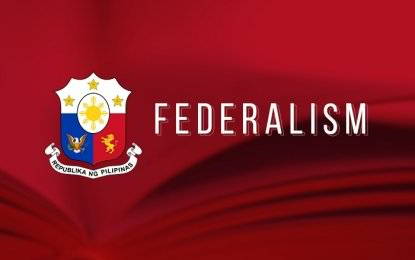
MANILA — Under the Consultative Committee’s (Concom) proposed federal Constitution, every federated region will share equally in 50 percent of the total of the four biggest revenue sources of the national government.
Concom senior technical assistant and spokesperson Ding Generoso bared this on Monday noting that the draft federal Constitution has been finalized and is set to be voted on in an en banc session on Tuesday. It is expected to be submitted to President Rodrigo R. Duterte on or before July 9.
“The Federated Regions shall be given a share of not less than fifty percent of all the collected taxes on income, excise, VAT (value added tax), and customs duties, which shall be equally divided among them and automatically released,” Generoso said in a press conference in Pasay City.
This proposed provision forms part of the design and structure of the federal system where the powers of government are distributed into exclusive powers and shared powers between the federal government and the governments of the federated regions.
Both the federal government and the federated regions will have exclusive powers. However, there are powers that they will jointly exercise.
Among others, the power to promulgate regional socio-economic development plans and regional sources of revenue shall be an exclusive power of the regional governments.
“We are also giving federated regions the power to have sources of revenues–the power to collect some taxes so that they will have on their own, an initial amount of revenue that they can use for their programs and projects,” Generoso said.
According to Generoso, through this, local officials will no longer have to line up in government offices in Metro Manila to seek for dole-outs or assistance from the national government like what is happening at present.
“What we’re giving them is control and power over a certain amount of money that they can on their own allocate according to their needs and priorities,” Generoso said.
“So you now give the federated regions the power also to make their own budget unlike today, where our budgeting is per department at the national level where departments identify programs in the region and then have the budget approved by the Department of Budget and Management and then by Congress,” he added.
Allocations will be determined by the region’s Regional Legislative Assembly (RLA) which will be composed of half from the component provinces, highly urbanized/independent chartered cities and half by proportional party representation elected regionwide.
“With the money that the federal government is giving them, the Legislative Assemblies will be the one to enact their own regional budget,” Generoso said.
Generoso also clarified that while the regional governments are given some taxation power, there are safeguards to prevent “unreasonable” impositions.
The Constitution mandates that taxation, whether at the federal or regional level is “uniform, equitable and progressive.” The Federal Inter-governmental Commission (FIGC) is also empowered to ensure the effectiveness and efficiency of the fiscal administration and management of the regional governments and promote regional cooperation..
Moreover, the set up promoted cooperative competition among the federated regions so that if a region wants to generate investments, it will have to make its program competitive with those of the other regions, Generoso explained.
Equalization fund
The Concom has also proposed the establishment of an Equalization Fund which shall not be less than three percent of the annual General Appropriations Act.
“The Fund shall be distributed based on the needs of each region, with priority to those that require support to achieve financial viability and economic sustainability as determined by the FIGC,” Generoso said, citing from the draft Constitution.
He said that the FIGC will be tasked to administer the Equalization Fund; assist the federated regions in attaining economic viability and sustainability; formulate programs and policies in regard to grants in aid and fund transfers to the federated regions; ascertain the effectiveness and efficiency of the fiscal administration and management of the regional governments; and assess sufficiency of regional governments in raising revenues; among others.
“These are among the safeguards to make sure the regions do not abuse their powers,” Generoso said.
Generoso said that the FIGC will be composed of 15 members–a Chairman and two members to be appointed by the President, two members from House of Representatives, two members from the Senate, four members to be appointed by Council of Regional Governors, one from the Bangsamoro to be appointed by the Bangsamoro Regional Assembly, one from Cordillera region, and the Secretaries of Budget and Management, and Finance.